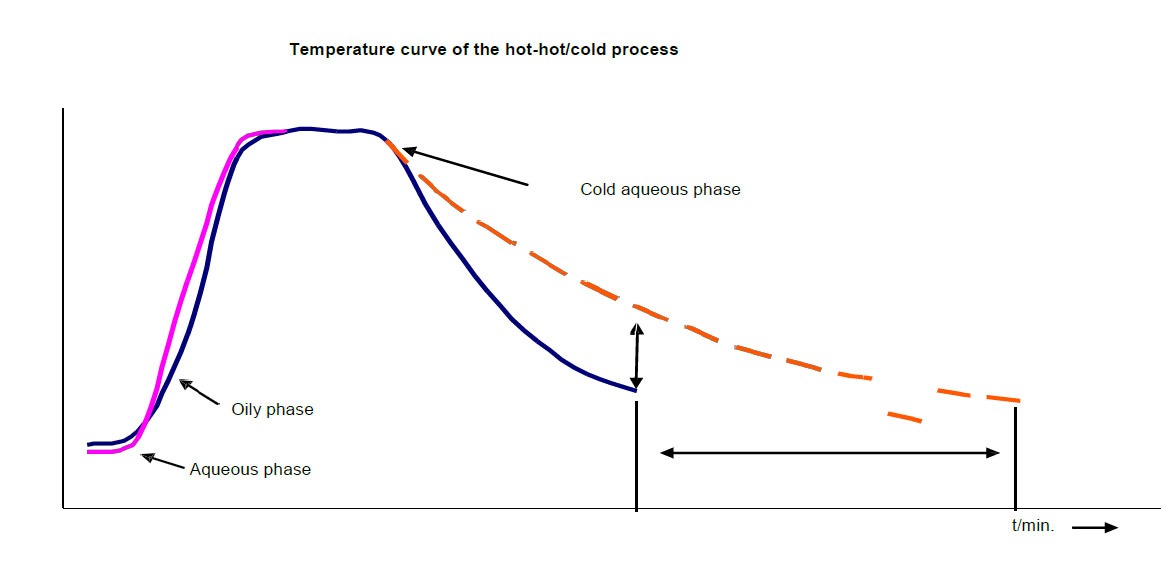Hot-hot/cold process – Emulsifying systems – OLEAMULS OW // OLEAMULS LOW
In many cosmetic emulsions, substances are used such as glyceryl monostearate, alcohols and fatty acids, waxes and esters which have a high melting point, substances that have a tendency to crystallize if an aqueous phase is used at a low temperature and cooled rapidly. In this case, at the end of processing, the product assumes a sandy, opaque and non-homogeneous appearance.
A production process that involves the addition of the oily phase melted to only 1/3 of the heated aqueous phase at the same temperature, proves to be particularly effective. After the formation of the emulsion, the remaining quantity of the aqueous phase at room temperature can also be added to a single solution. It needs to be stirred at high speed and homogenize the emulsion as soon as the complete release of the aqueous phase has ended.

As shown in the graph, in the hot-hot/cold process the cooling and stirring time can be considerably reduced by using part of the cold aqueous phase.
